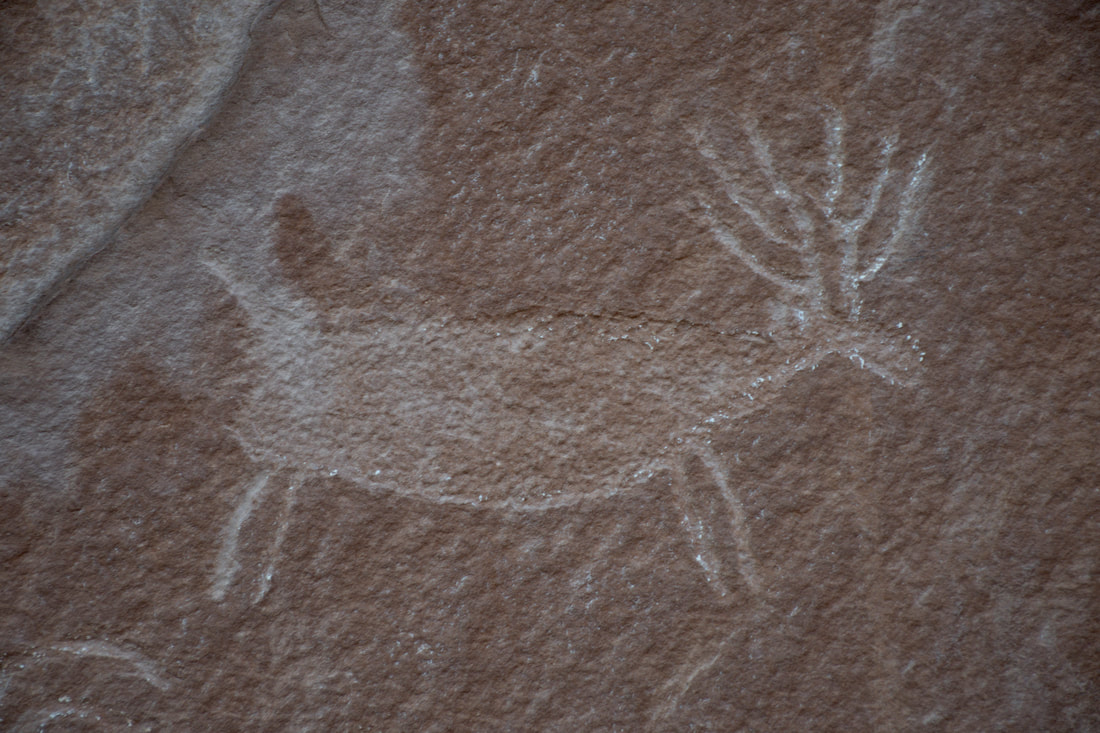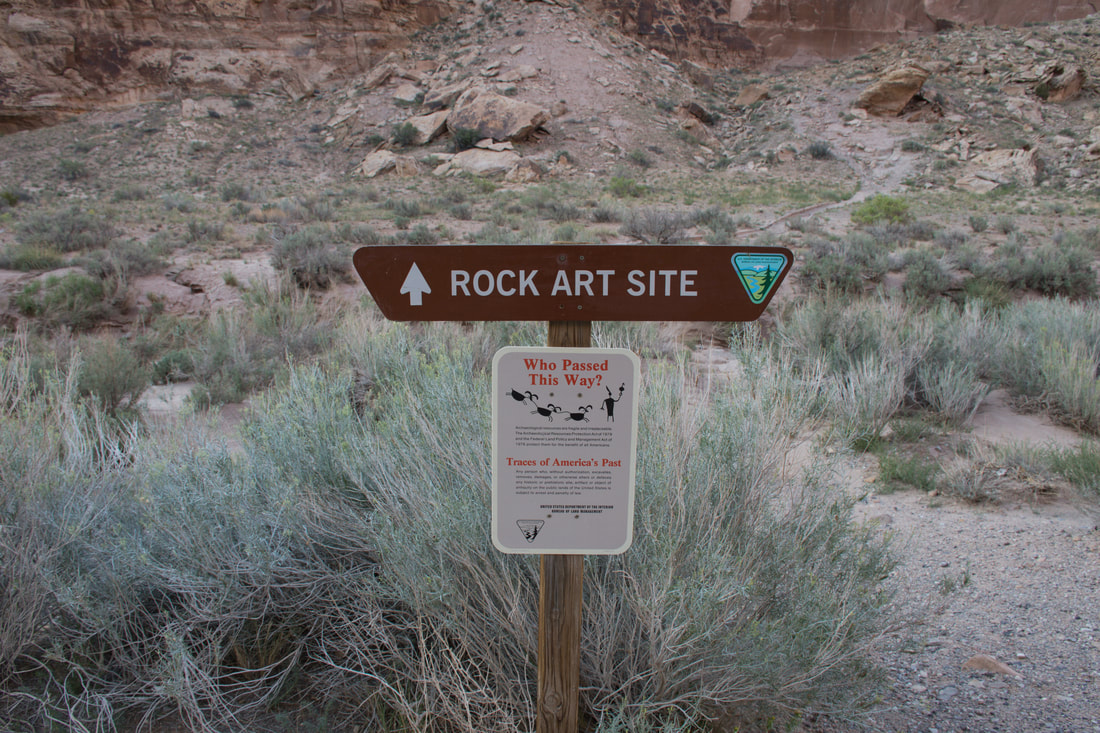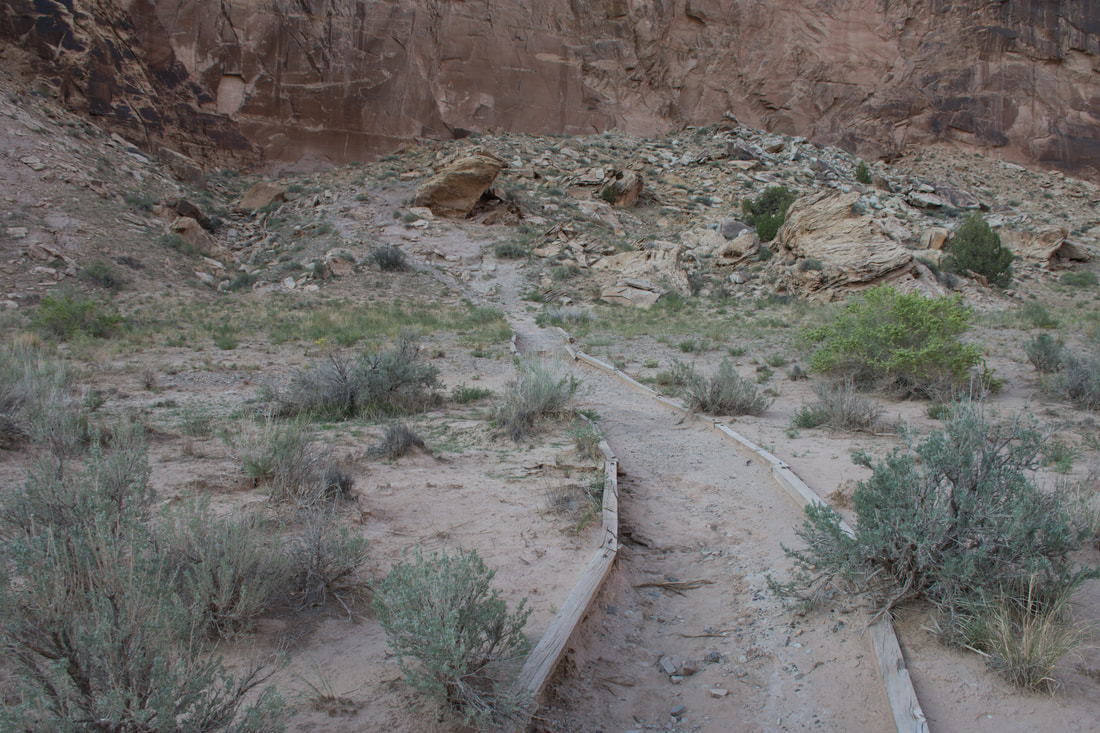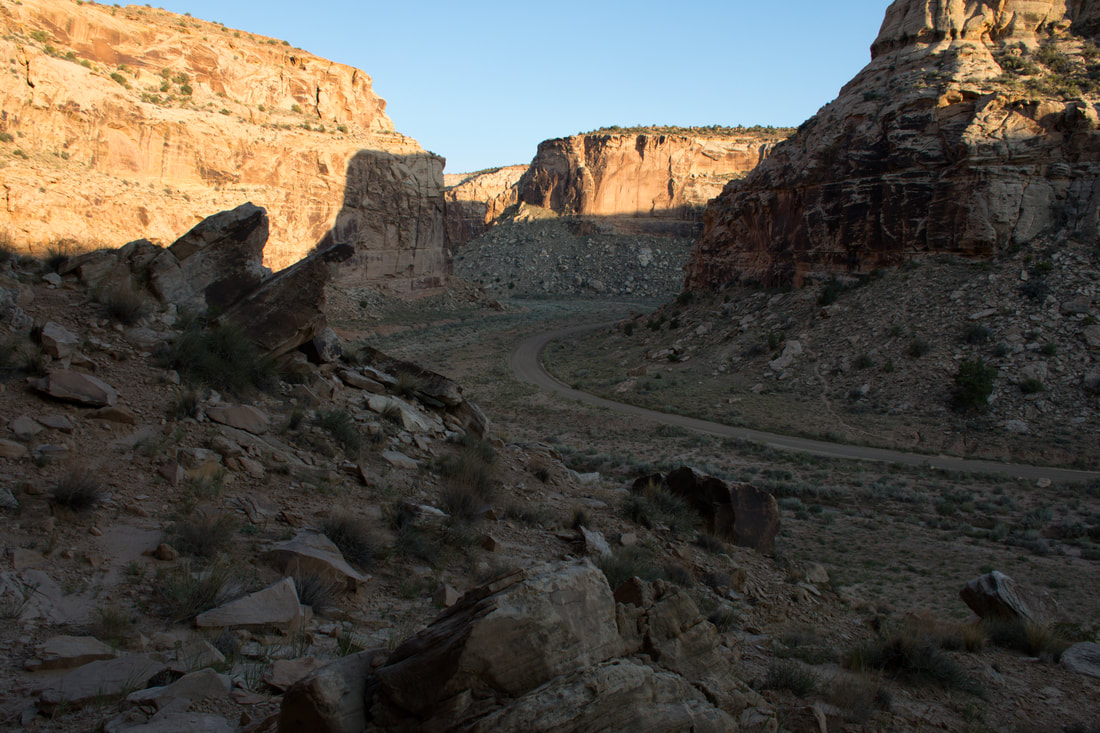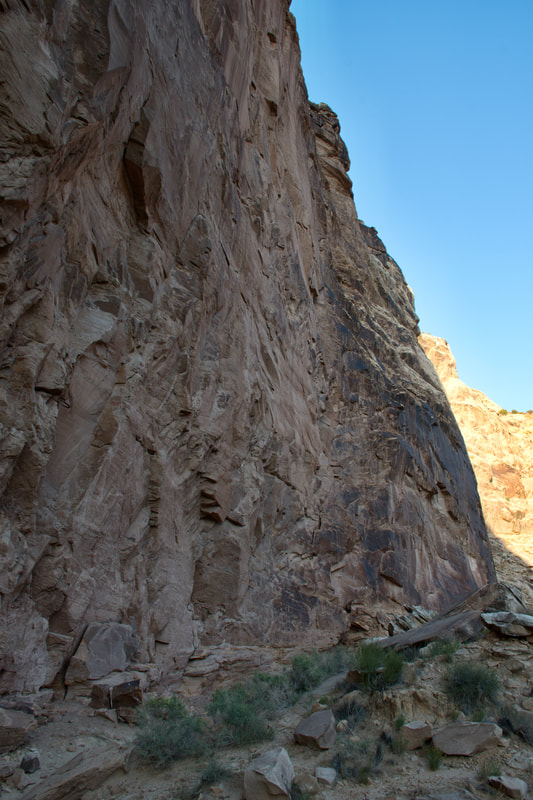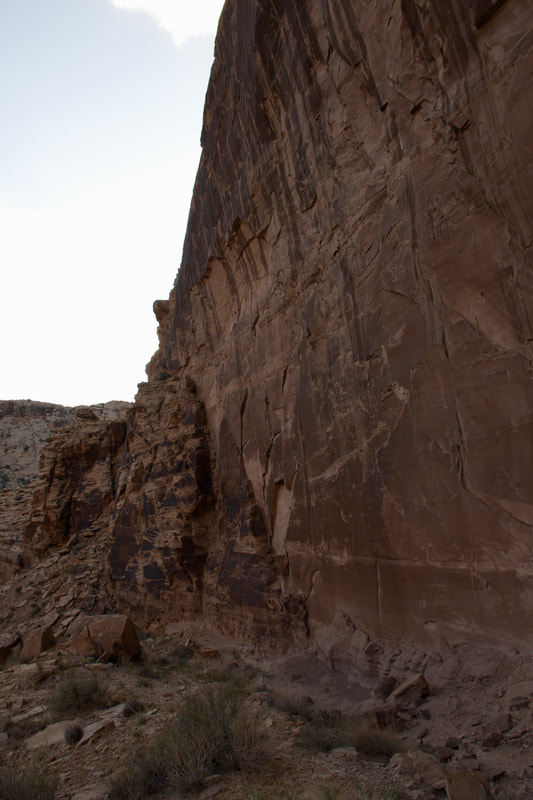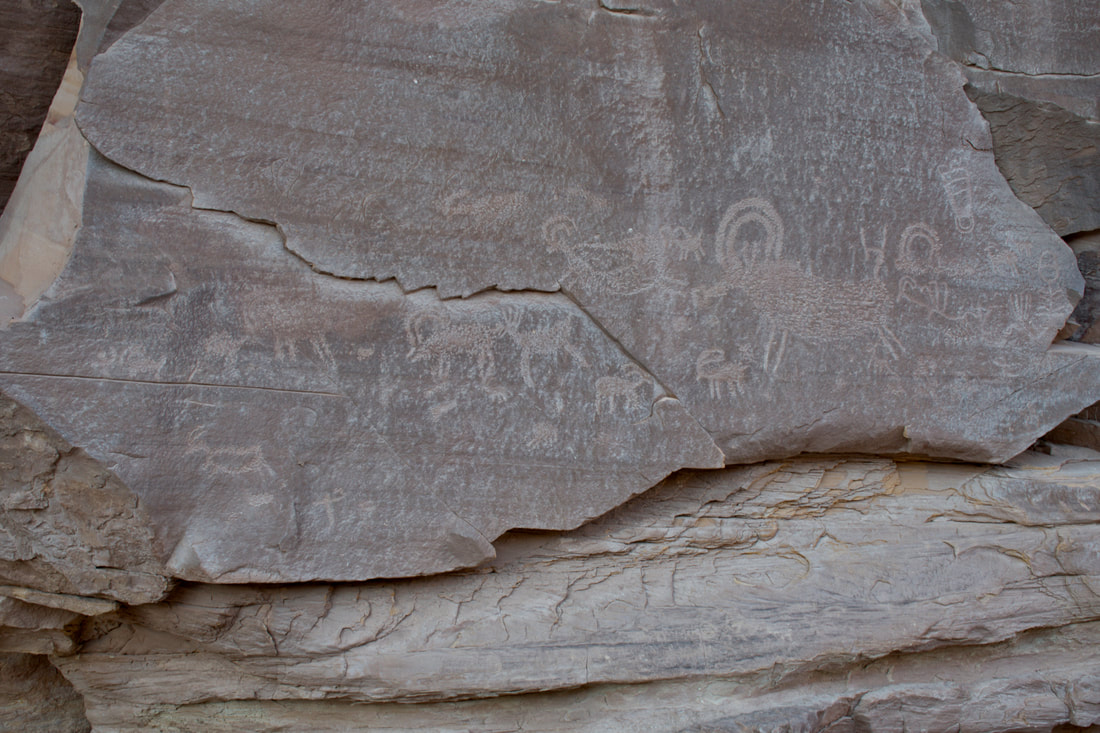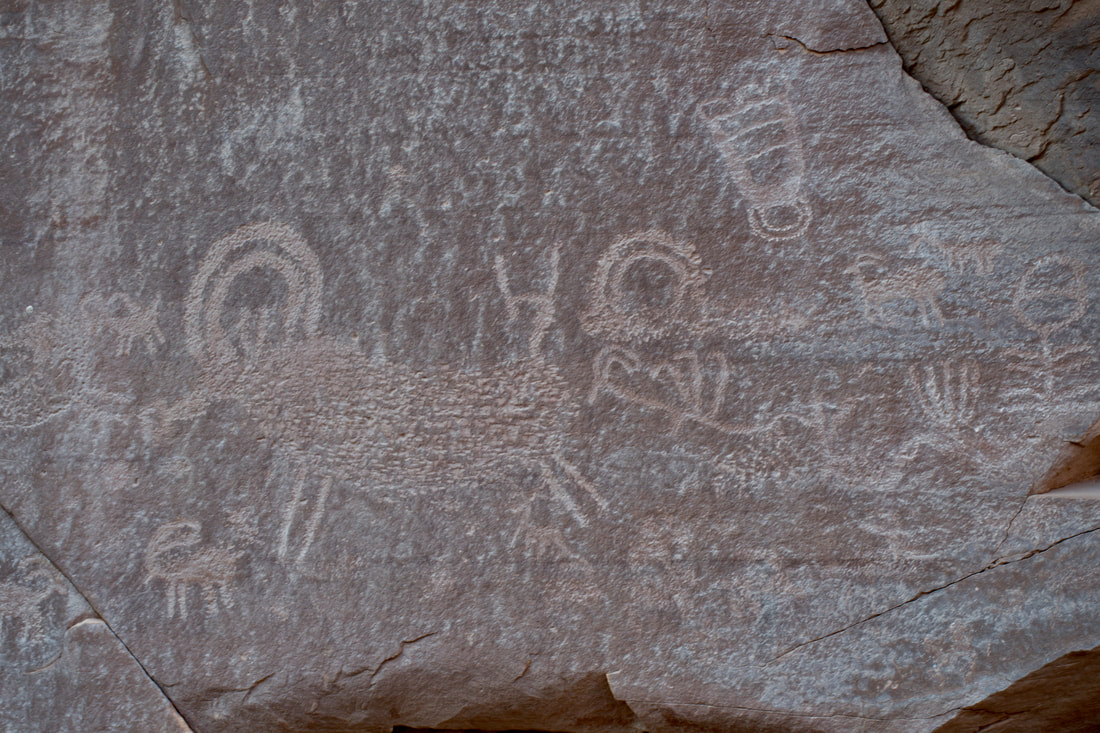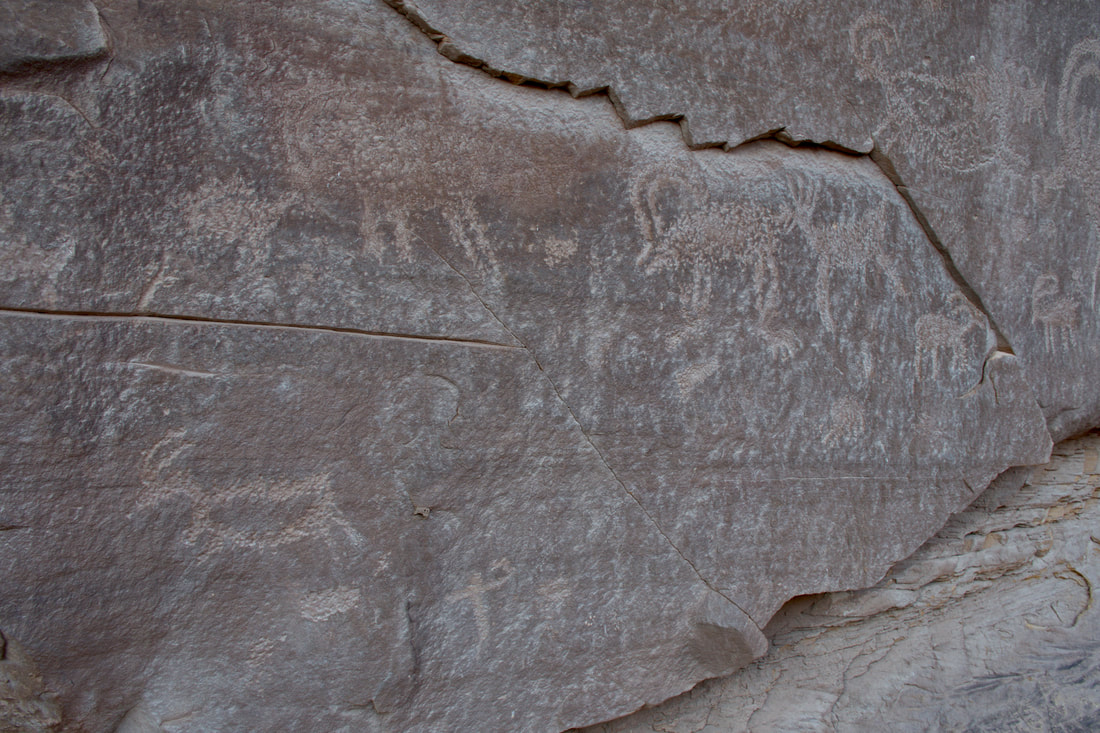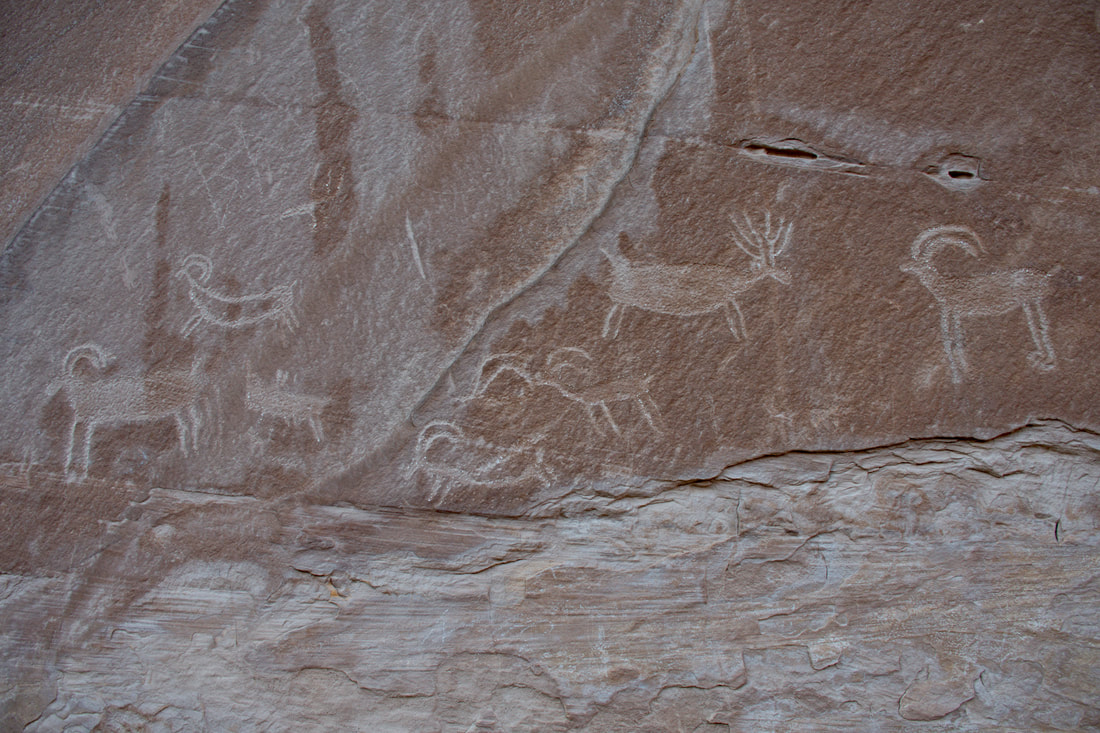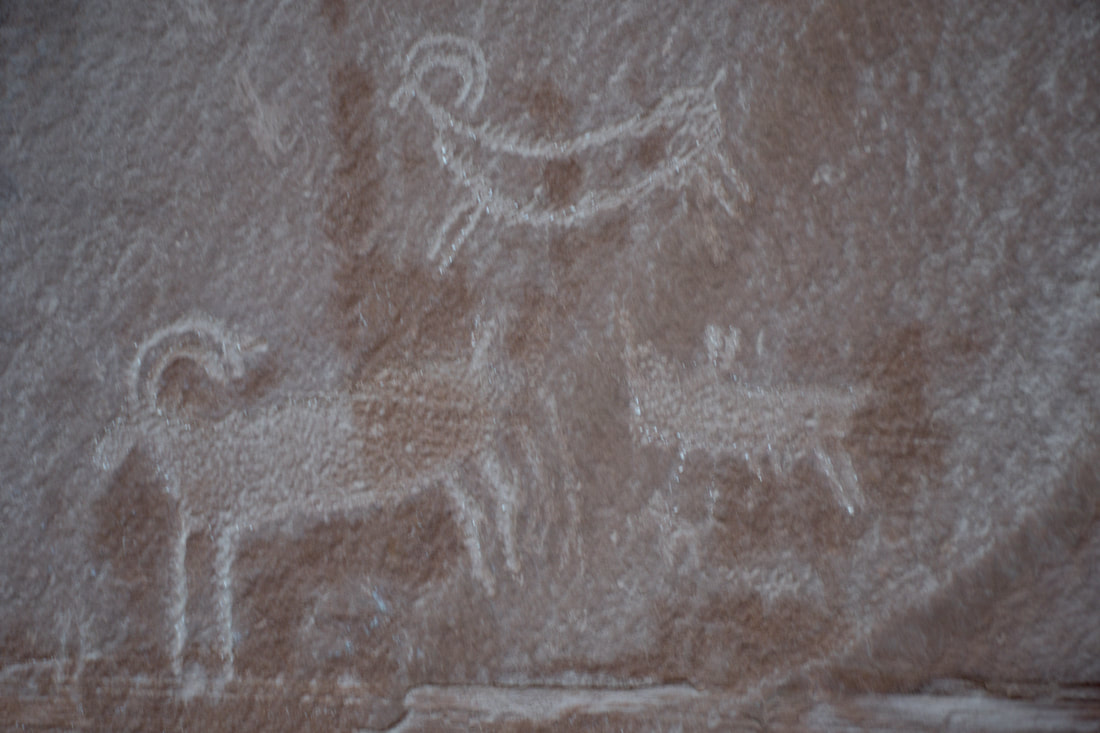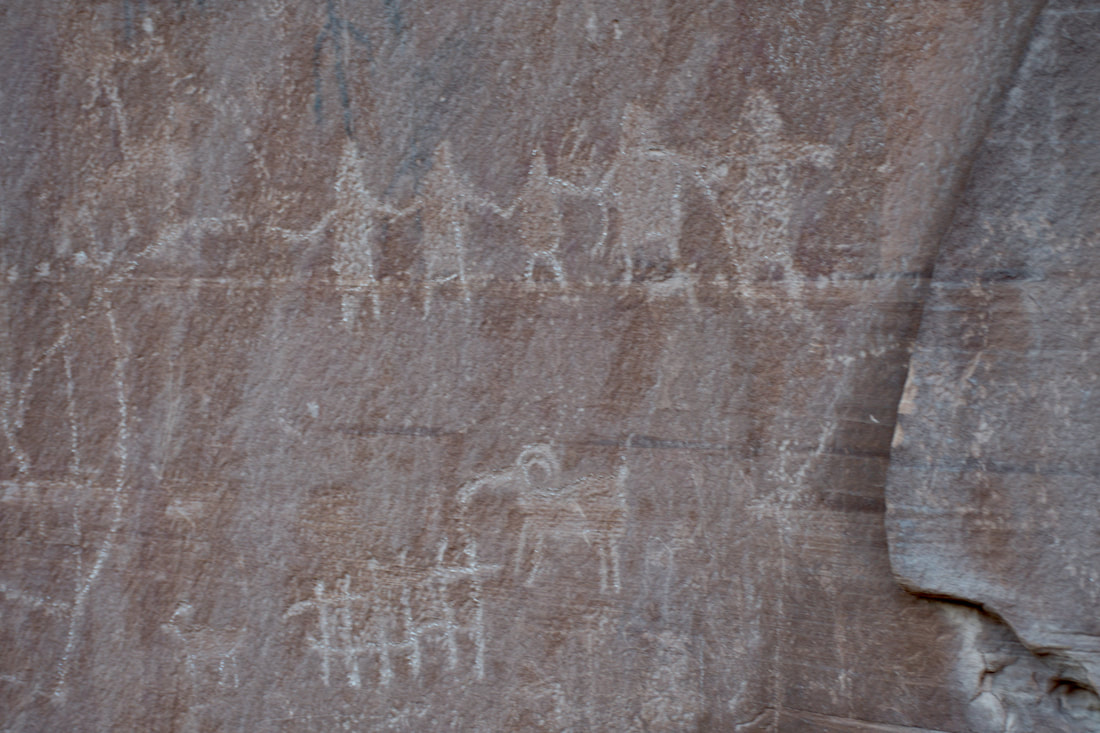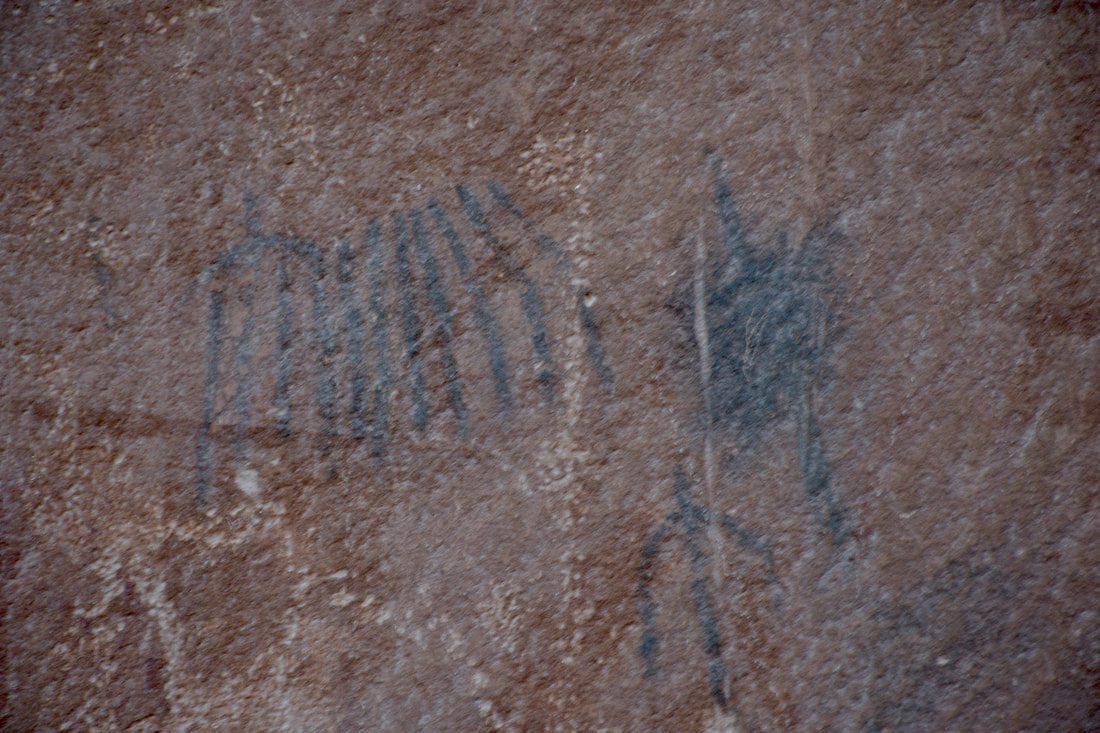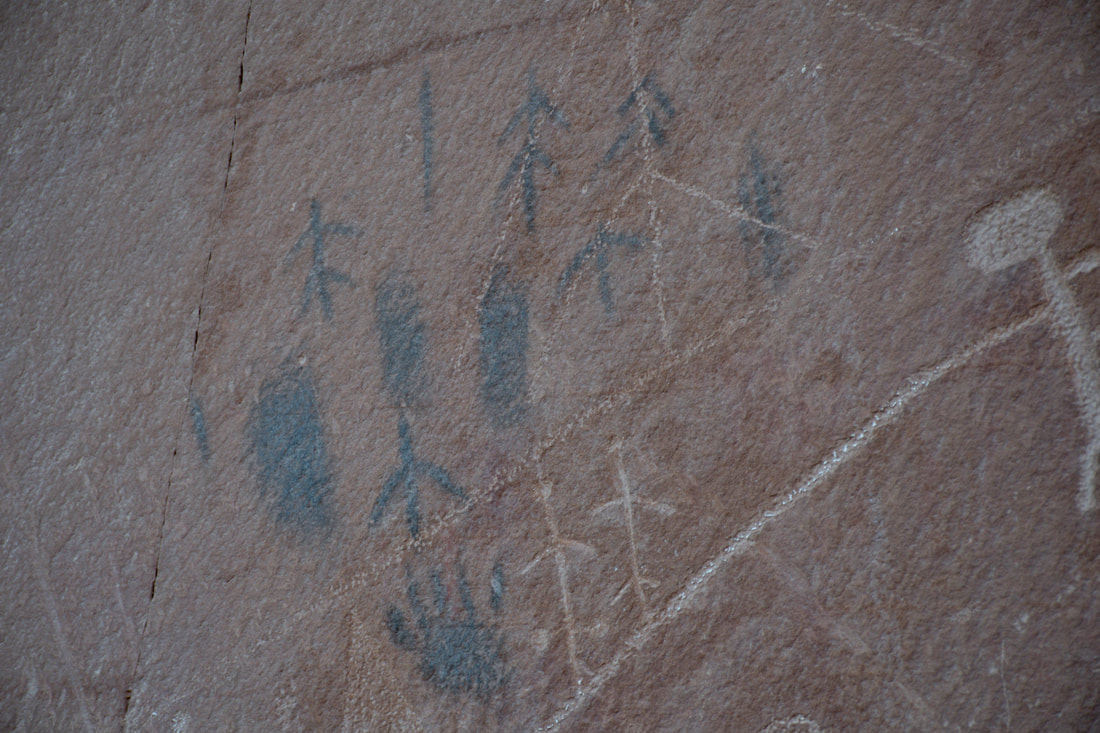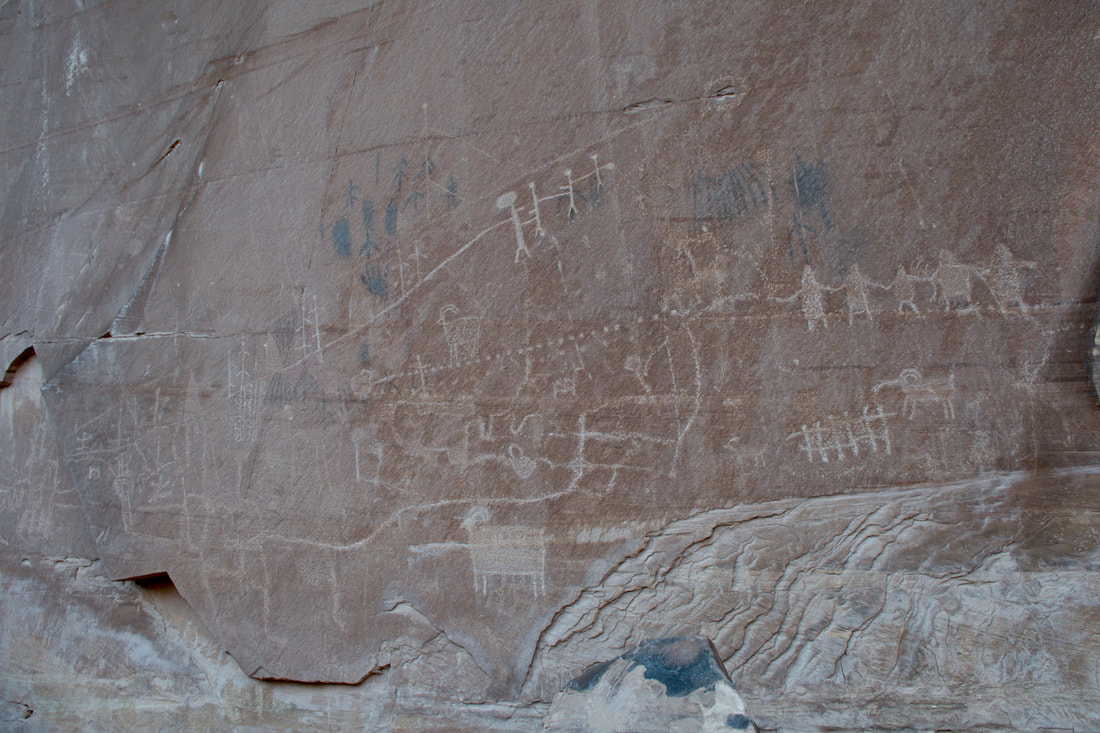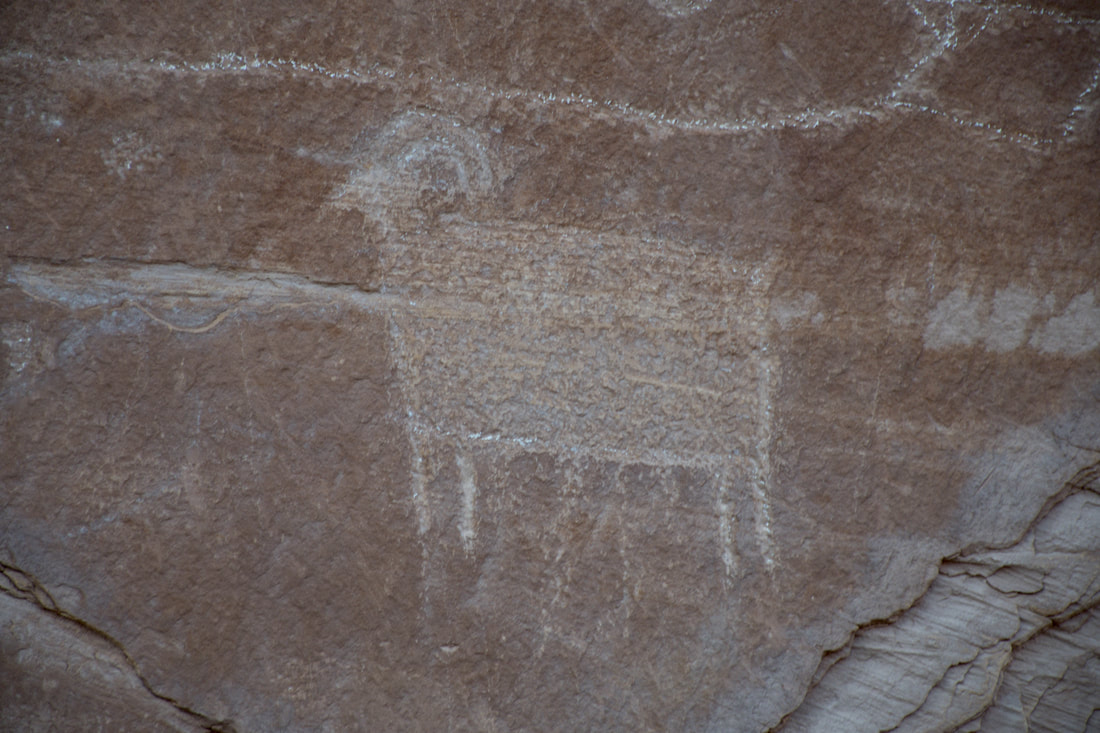|
The Buckhorn Wash Rock Art Site is located near the Dinosaur Track Site about midway into this lengthy canyon. Previously published articles describe the best way to access the Buckhorn wash and where to find the Dinosaur Track. Dispersed camping is also mentioned, since there is so much to see and do that an entire vacation can be planned for the San Rafael Swell region on its own. Rock climbing and hiking through some of the most intriguing geology in the west is what the San Rafael Swell is most famous for, while this is a haven for archaeology buffs as well. Native heritages in this region dates back over eons of time and there are examples of ancient rock that are thousands of years old. Each mysterious rock art site tells a story that is fascinating to decipher. For those who visit several of these sacred places, the ancient artwork of individual artists can be recognized throughout this region and well beyond. Depictions of how life once was is interesting to see, especially when viewing rock art panels that have a wild game theme. The Buckhorn Wash Rock Art Site features bighorn sheep hunting scene petroglyphs from an age when huge herds of these animals could be seen nearly everywhere out west. Diseases from domestic goat and sheep herding decimated the wild bighorn populations during the age of European colonization and now bighorn are a rare sight to see out in the wild. Panels like the Buckhorn Wash Rock Art Site definitely confirm that bighorn were once abundant in this area, while human interaction with these animals is depicted as well. A lot can be learned by viewing ancient rock art and Buckhorn Wash definitely is a gallery worth experiencing. The Buckhorn Wash Rock Art Site features a large collection of petroglyphs and there is a small section of black painted pictographs that may have been created by another ancient culture. Another gigantic pictograph panel is located near the San Rafael River Bridge Campground at the far end of Buckhorn Wash, which is all the inspiration needed for doing the complete tour. When experiencing the many rock art sites of the west, social responsibility does come into play, because of the wave of recent native heritage site desecration by vandals. Taking pictures of criminal acts and reporting suspicious behavior via 911 or the rangers will help to protect these priceless works of art for future generations. Touching the pictographs or petroglyphs is a no no, because the oil from skin will rapidly degrade the artwork. Geo-tagging (GPS marking) the rock art sites found in remote places is also taboo, since this makes it easier for vandals to find these sacred places. Basically the best protection comes from socially responsible visitors and treating the sacred places with respect will make a tour of the west all the more fulfilling.
0 Comments
Your comment will be posted after it is approved.
Leave a Reply. |
Leave no trace!
New!
Destination West YouTube channel! https://www.youtube.com/@DestinationWestOrg *The Destination West website upgrading project is well underway. Unique YouTube slideshows are replacing the outdated Flickr photo galleries. The new videos feature modern graphics and alternative music instrumentals that enhance the viewing experience. Some articles are being condensed, while others are getting much needed edits. As everybody knows, the bulk of the original articles and photos were published on the fly during the Covid camping venture and there were limitations. Upgrading is the way to go and more articles will receive a makeover each week until this project is completed. After that, I will be able to gather new material. There is light at the end of the tunnel!
JD Lane Archives
July 2024
Donations help the Destinaton West project continue into the future!
Go Fund Me! This website uses marketing and tracking technologies. Opting out of this will opt you out of all cookies, except for those needed to run the website. Note that some products may not work as well without tracking cookies. Opt Out of Cookies |
